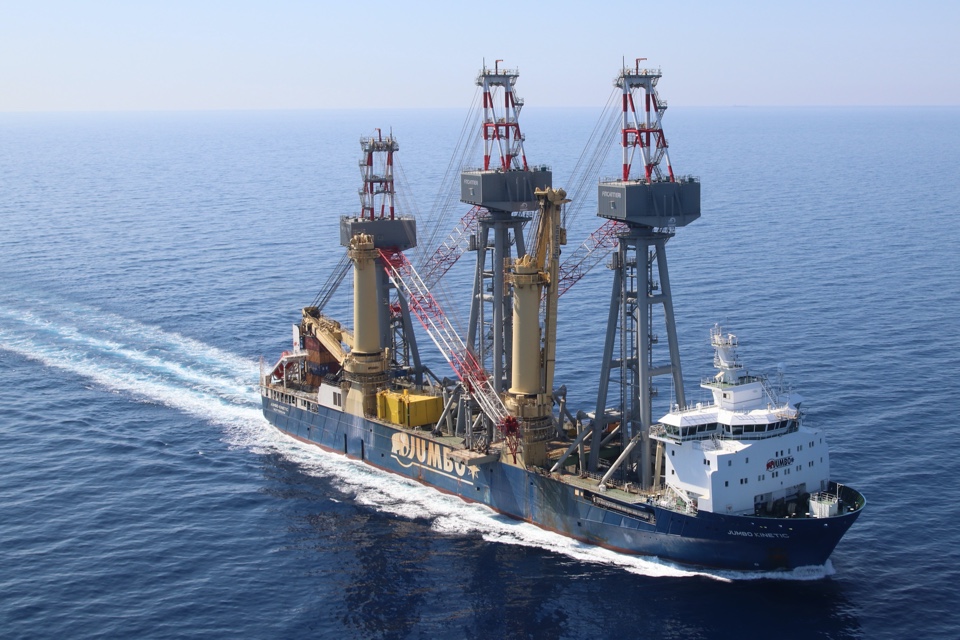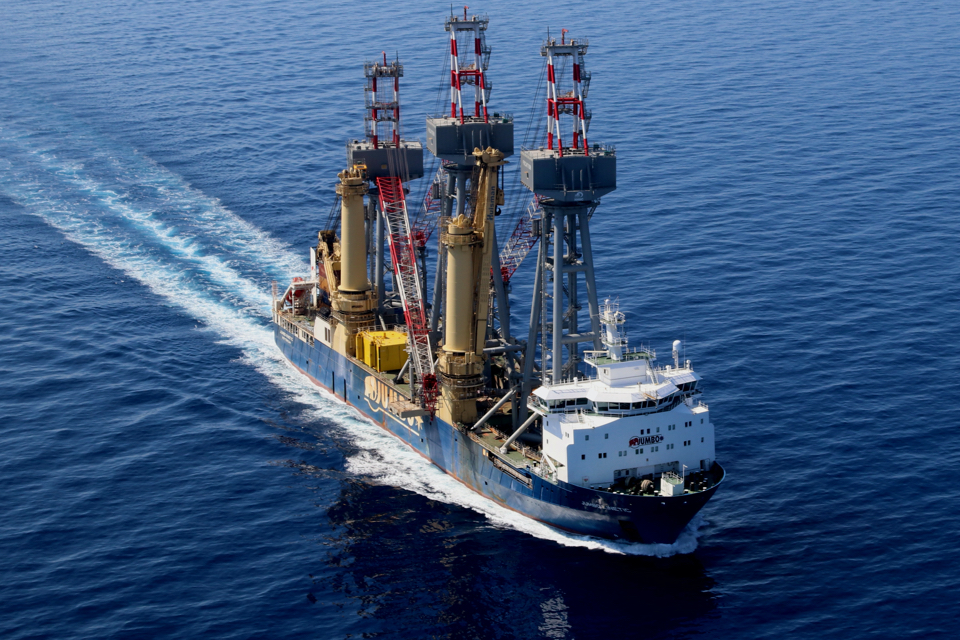Jumbo-SAL Alliance’s heavy lift vessel Jumbo Kinetic has transported three fully assembled shipyard cranes from China to Italy. Transporting such cranes is challenging because they are both tall and extremely narrow. This meant stability needed to be increased for lifting and during the trip using ballast.
The cranes were picked up from Haixi Heavy Machinery Company in Qingdao, China, and delivered to three different Fincantieri shipyards in Italy.
Most notable aspect of the transport was that the cranes were fully erected. The alternative was to transport them in pieces (pedestal, crane house and boom) and then erect them at their destinations, but this was rejected based on overall project costs.
Because the cranes are narrow with a small footprint as compared to other types of cranes, their centre of gravity is relatively high. The highest two cranes, for instance, were 137 metres high during loading (with boom raised fully) and 81 metres high during transport.
Also read: Jumbo Shipping and SAL Heavy Lift joint venture becomes reality
Increasing stability
The team engineered a shipping solution in less than three months.
‘These cranes were particularly narrow; one of them was only nine metres wide at its base. Therefore, stability of the cranes was critical during the lift,’ explains Jumbo Senior Project Engineer Otto Savenije, whose job focuses on the lifting and stability calculations, seafastening and engineering of the project. ‘We added 100 tonnes of ballast to the base of one of the cranes to increase stability during the lift and the voyage.’
The Jumbo Kinetic, only one of three vessels in the world capable of this project, loaded the cargo with its own 1500-mt deck cranes – each lift as a dual-lift – into its cargo hold. ‘We lifted the first and second cranes one by one to the middle of the ship, driving them aft and forward on temporary rails that we built at two different heights. The third crane stayed in the middle of the ship,’ adds Savenije.

Wave height restriction
With its cargo safely loaded, the Jumbo Kinetic departed Qingdao, China, on 10 February. The dimensions of the cargo impacted the route options for Jumbo’s Vessel Manager Jeroen Herders. ‘The cranes were too high to pass under the Mubarak Bridge in the Suez Canal. So, we had to go round the Cape [of Good Hope], have a bunker stop in Durban, and then going up the west coast of Africa to the Mediterranean.’
To guarantee that the maximum allowed acceleration forces on the cargo where not exceeded throughout the entire voyage, the Jumbo Kinetic sailed with a maximum wave height restriction of 5.4 metres. Anything higher than that, the vessel had to slow down. But as it happened, the ship had favourable weather en route, resulting in a smooth passage around the Cape and no delays during the transit.
The cranes were subsequently unloaded at the three ports of call in Italy: Trieste on 1 April, Sestri on 18 April, and La Spezia on 26 April.
Also read: Jumbo sets record loading and delivering project cargo in India
Watch a video of the transport and the shipping solution below.
[newsletter_form title=”Would you like to receive the free newsletter of SWZ|Maritime? Please fill in your e-mail address here:”]








